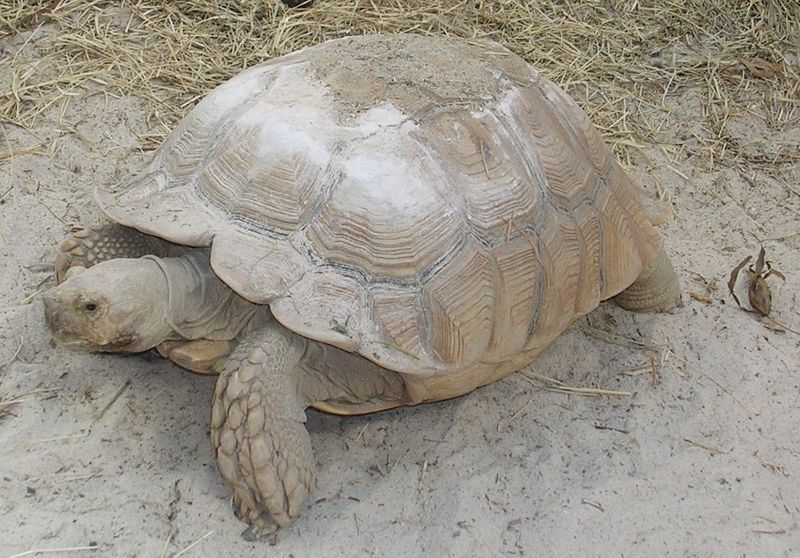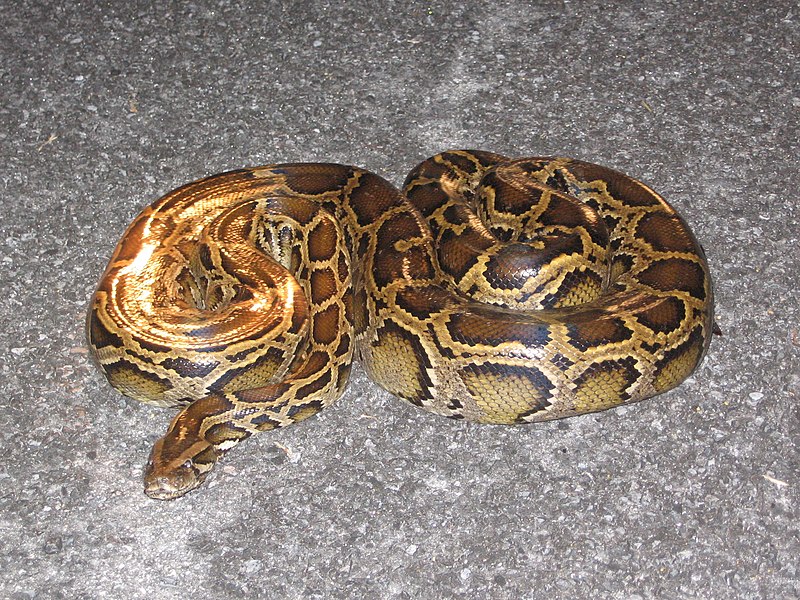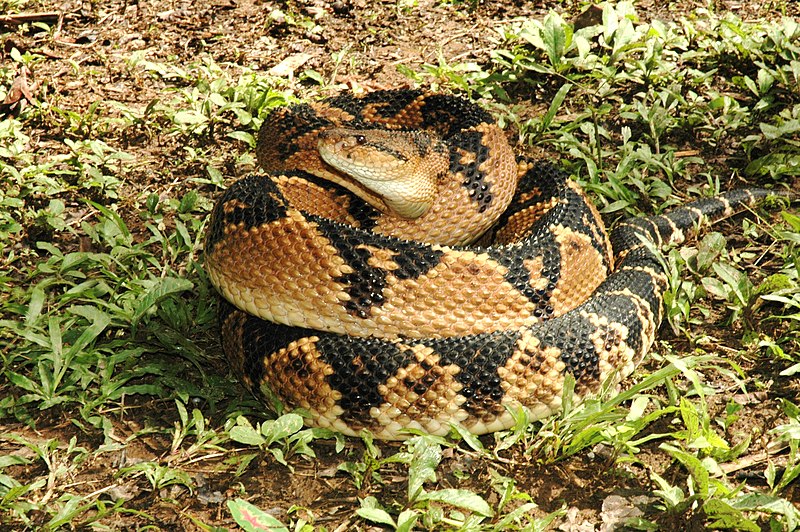 From enormous Burmese Pythons in Florida to Wall Lizards in NYC, introduced species come as little surprise to US herp enthusiasts. But the recent (December, 2010) discovery that a huge African Spurred or “Sulcata” Tortoise, Geochelone sulcata, had apparently been living in an Arizona desert for some time, gave most of us pause for thought. Read More »
From enormous Burmese Pythons in Florida to Wall Lizards in NYC, introduced species come as little surprise to US herp enthusiasts. But the recent (December, 2010) discovery that a huge African Spurred or “Sulcata” Tortoise, Geochelone sulcata, had apparently been living in an Arizona desert for some time, gave most of us pause for thought. Read More »
Category Archives: Reptiles and Amphibians in the News
Feed SubscriptionThe Asian Turtle Crisis – a Sobering Update – Part 1
 The term “Asian Turtle Crisis” was coined in 1997, when photos of thousands of rare turtles being slaughtered in a Guangzhou, China food market propelled the tragic plight of Asia’s freshwater turtles into the conservation spotlight. The private turtle-keeping and zoo communities were quick to take action, and a number of fine organizations and programs resulted. In 2001, I traveled to south Florida to help rehabilitate and place 7,500-10,000 turtles that had been confiscated in China.
The term “Asian Turtle Crisis” was coined in 1997, when photos of thousands of rare turtles being slaughtered in a Guangzhou, China food market propelled the tragic plight of Asia’s freshwater turtles into the conservation spotlight. The private turtle-keeping and zoo communities were quick to take action, and a number of fine organizations and programs resulted. In 2001, I traveled to south Florida to help rehabilitate and place 7,500-10,000 turtles that had been confiscated in China.
Hard Work Pays Off
In south Florida I worked day and night alongside dedicated folks from the New York Turtle and Tortoise Society and other herp-oriented organizations, internationally-known turtle biologists, private turtle fanciers and zoo colleagues. The marathon effort was a grand success, with more turtles saved and placed in good homes than anyone would have dared hope upon first seeing their wretched condition. Given the passion, funds and other support that the situation aroused, the future looked promising. Unfortunately, 9 years later, the situation remains very bleak.
90+ Species Face Extinction
Recent studies by Conservation International (please see this article) reveal that at least 1/3 of the world’s 280 turtle species, including most of those found in Southeast Asia, are in imminent danger of extinction. Two photos on the homepage of the NY Turtle and Tortoise Society, taken 12 years apart in Guangzhou, China food markets, illustrate, graphically and tragically, that little has changed.
 Several turtle species are represented by single populations numbering 12-50 individuals; only 4 specimens of the Red River Giant Softshell (Rafetus swinhoei, please see photo) are known to exist, the status of many Asian Box Turtles (Cuora spp., please see photo) can not even be determined, but several species have not been seen in years…the list goes on.
Several turtle species are represented by single populations numbering 12-50 individuals; only 4 specimens of the Red River Giant Softshell (Rafetus swinhoei, please see photo) are known to exist, the status of many Asian Box Turtles (Cuora spp., please see photo) can not even be determined, but several species have not been seen in years…the list goes on.
In Part 2 of this article we’ll take a look at the causes of the recent catastrophic declines in turtle populations and what is being done to reverse the trend.
Further Reading
Excellent article on the status of Asia’s turtles along with disturbing photos from food markets in China – READ THIS!
Turtle Survival Alliance Programs
Cuoras Species Headshots image referenced from wikipedia and originally posted by Torsten Blanck
A Monitor First – Male Rosenberg’s Monitors Cover and Guard Nests
 I remain awed by the learning abilities and complex behaviors evidenced by the Water and Lace Monitors I cared for at various zoos…spend time with any species and you’ll quickly see why. Despite being popular study subjects, monitors are constantly surprising us. For example, the current issue of The Journal of Herpetology (V44, N3, Sept 2010) documents an entirely new behavior for any monitor species – cooperative nest building and nest guarding in Rosenberg’s Monitor (Varanus rosenbergi).
I remain awed by the learning abilities and complex behaviors evidenced by the Water and Lace Monitors I cared for at various zoos…spend time with any species and you’ll quickly see why. Despite being popular study subjects, monitors are constantly surprising us. For example, the current issue of The Journal of Herpetology (V44, N3, Sept 2010) documents an entirely new behavior for any monitor species – cooperative nest building and nest guarding in Rosenberg’s Monitor (Varanus rosenbergi).
Nest Defense by both Sexes
A 16-year-long study of this species on Australia’s Kangaroo Island has revealed that females guard their nest sites for up to 3 weeks after egg deposition, a behavior that has not been documented for any other monitor (3 species, including the Komodo Dragon, may return to the nest site on occasion, but seem not to remain nearby). Amazingly, in 8 instances a male joined the female in protecting the eggs. Read More »
Florida Burmese Python Study – Snakes Cannot Survive South Carolina Winter
 In 2008, a computer-based study by the US Geological Survey stated that Florida’s introduced Burmese Pythons (Python molurus bivittatus) might colonize up to 1/3 of the United States in time. While the snakes’ presence in Florida is a severe problem, the release of this study generated a flood of illogical fears and predictions. Recently, another study conducted by a noted herpetologist and utilizing live snakes has injected some sanity into the controversy. Read More »
In 2008, a computer-based study by the US Geological Survey stated that Florida’s introduced Burmese Pythons (Python molurus bivittatus) might colonize up to 1/3 of the United States in time. While the snakes’ presence in Florida is a severe problem, the release of this study generated a flood of illogical fears and predictions. Recently, another study conducted by a noted herpetologist and utilizing live snakes has injected some sanity into the controversy. Read More »
Professional Herpetological Organizations and Journals – Part 2
 Please see Part 1 of this article for general information and details concerning some well-known, long-established groups and journals. Today we’ll take a look at some newer organizations that cater to special interests. Read More »
Please see Part 1 of this article for general information and details concerning some well-known, long-established groups and journals. Today we’ll take a look at some newer organizations that cater to special interests. Read More »
 That Reptile Blog – Reptile, Amphibian and Exotic Pet Care and Information
That Reptile Blog – Reptile, Amphibian and Exotic Pet Care and Information
